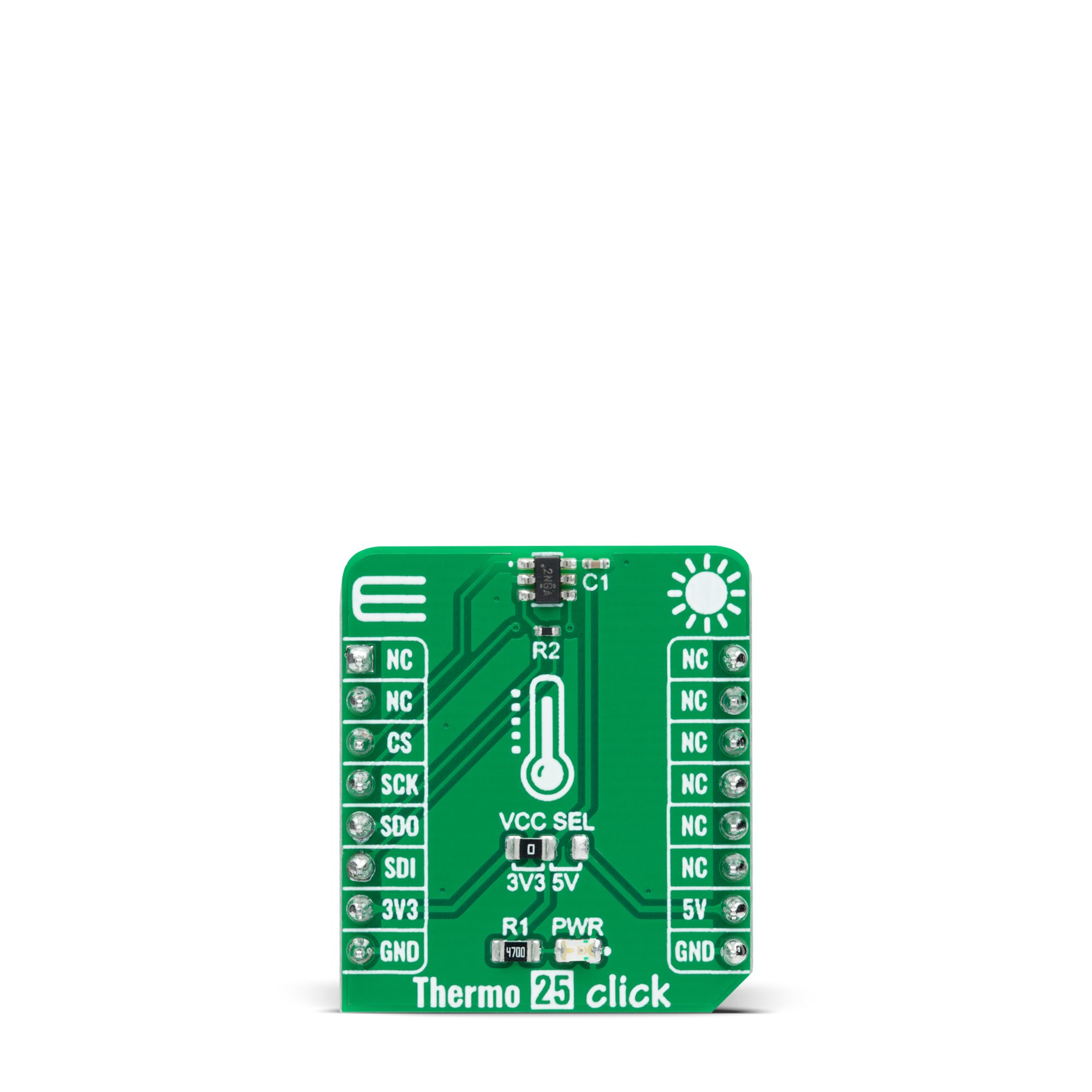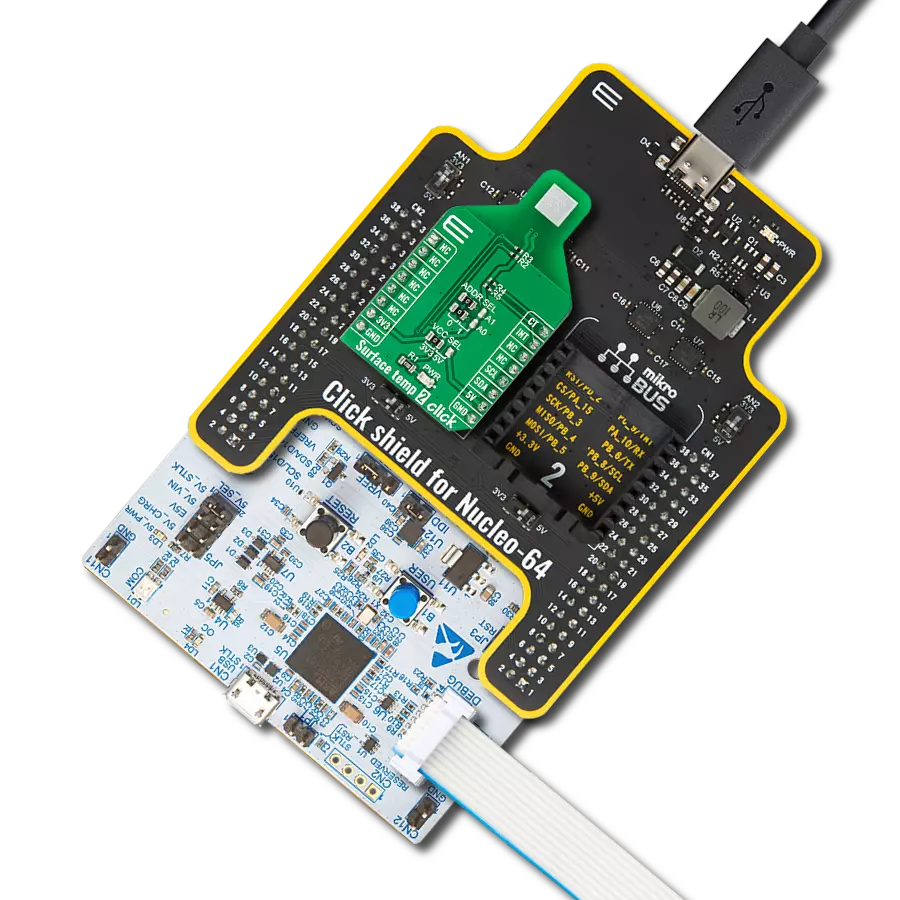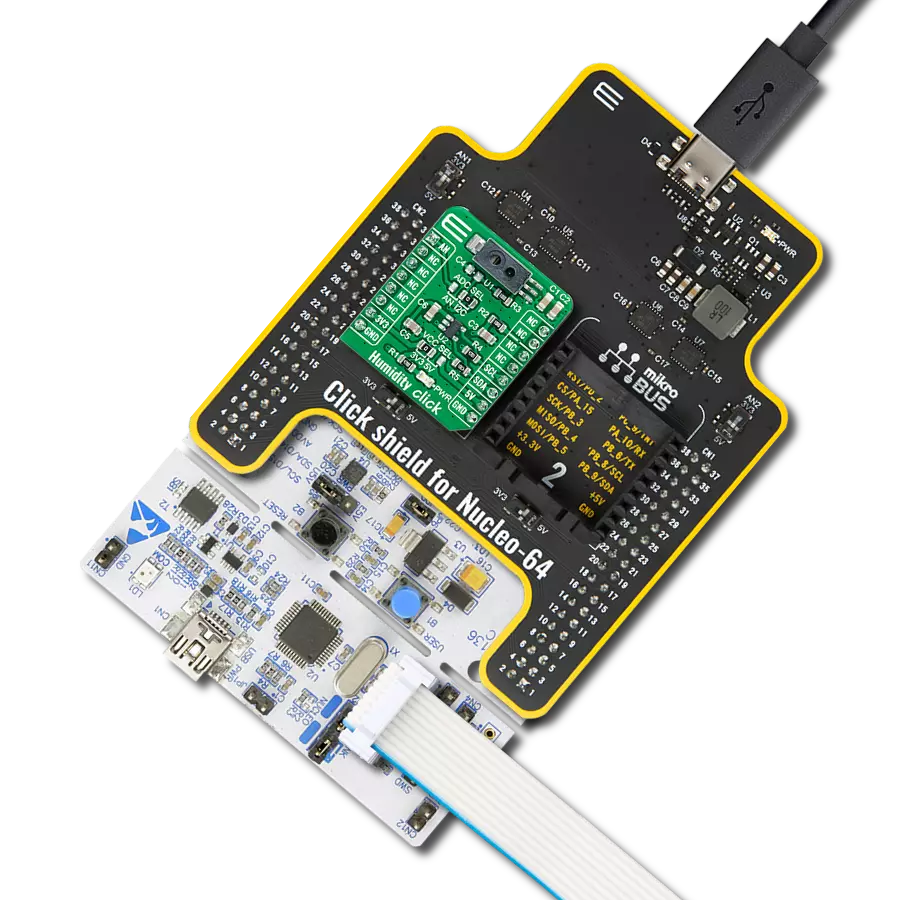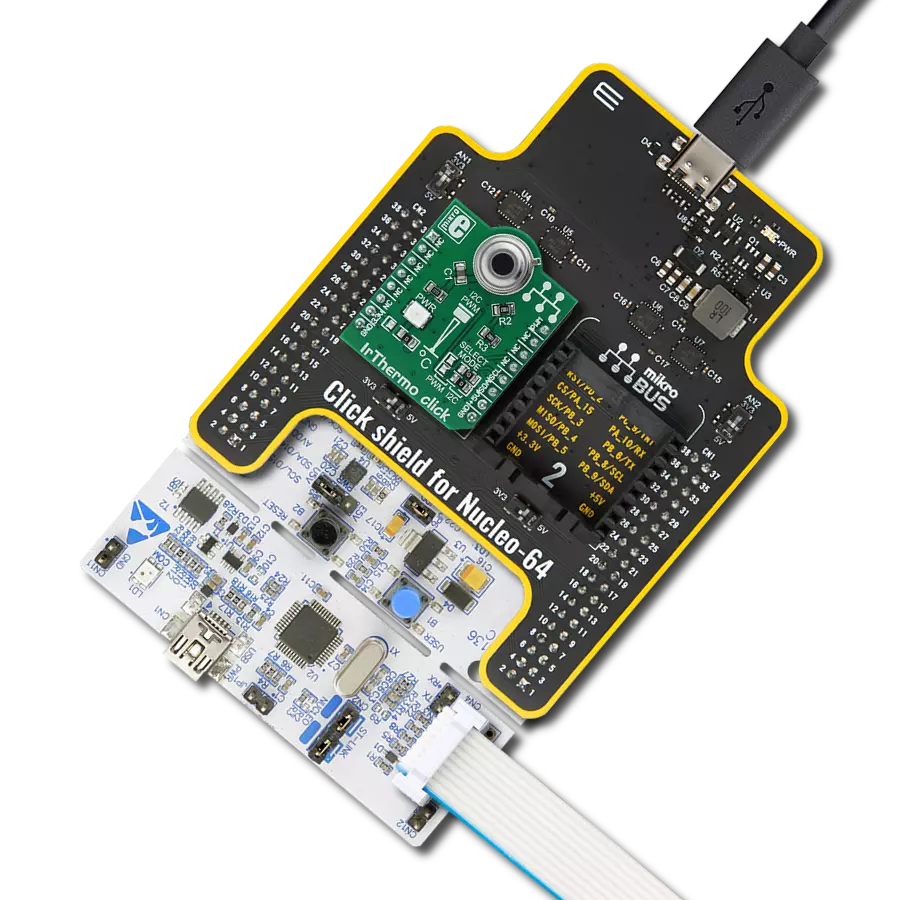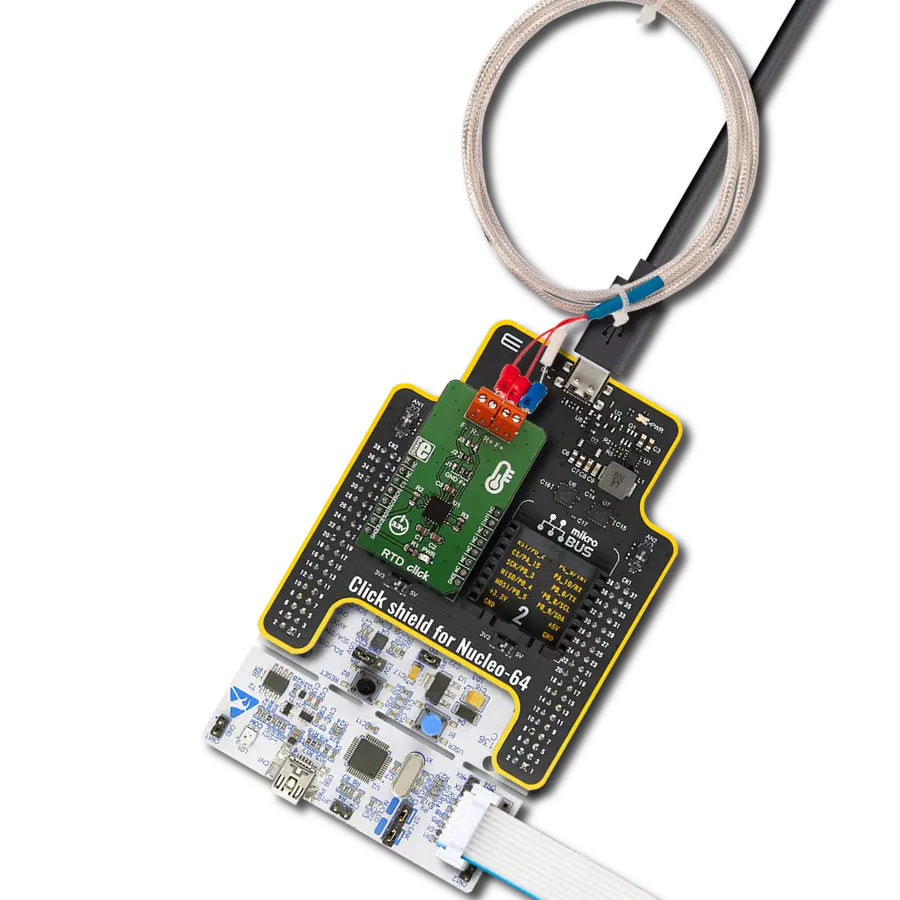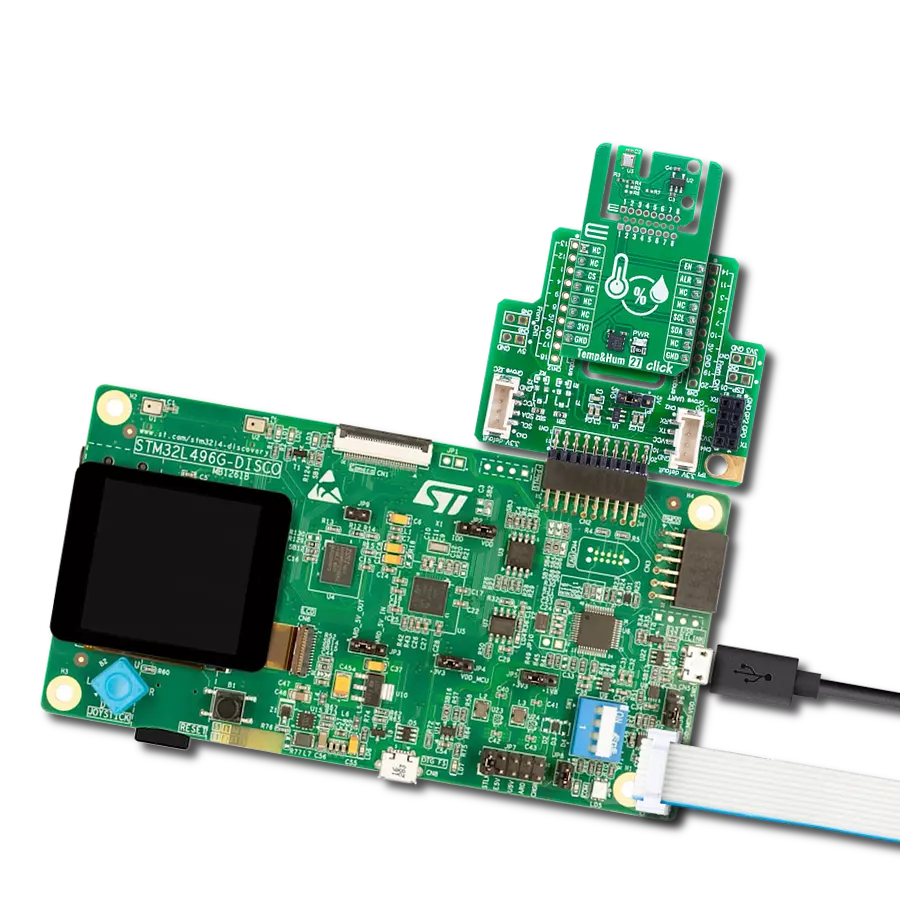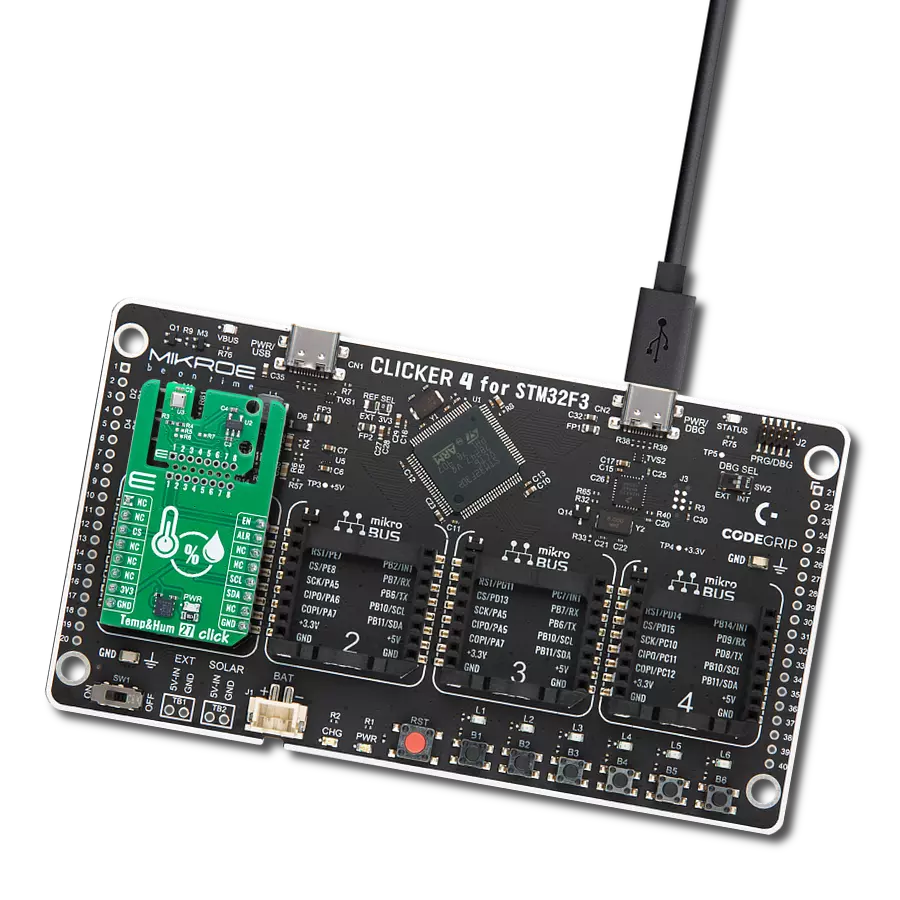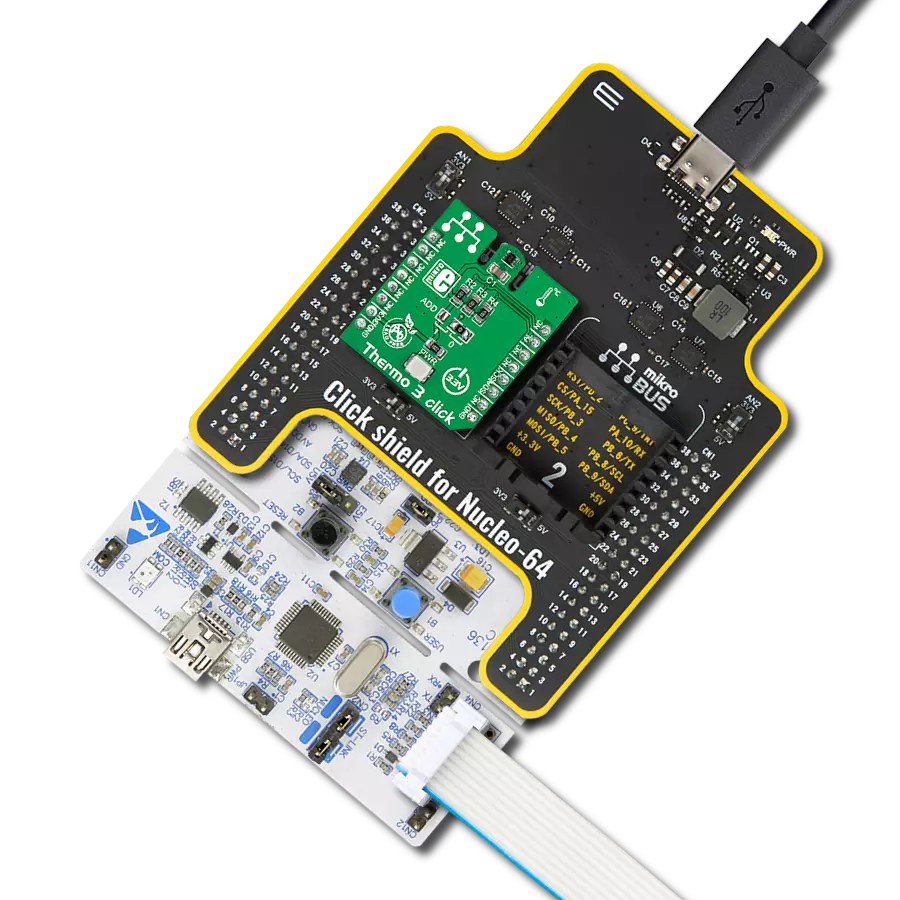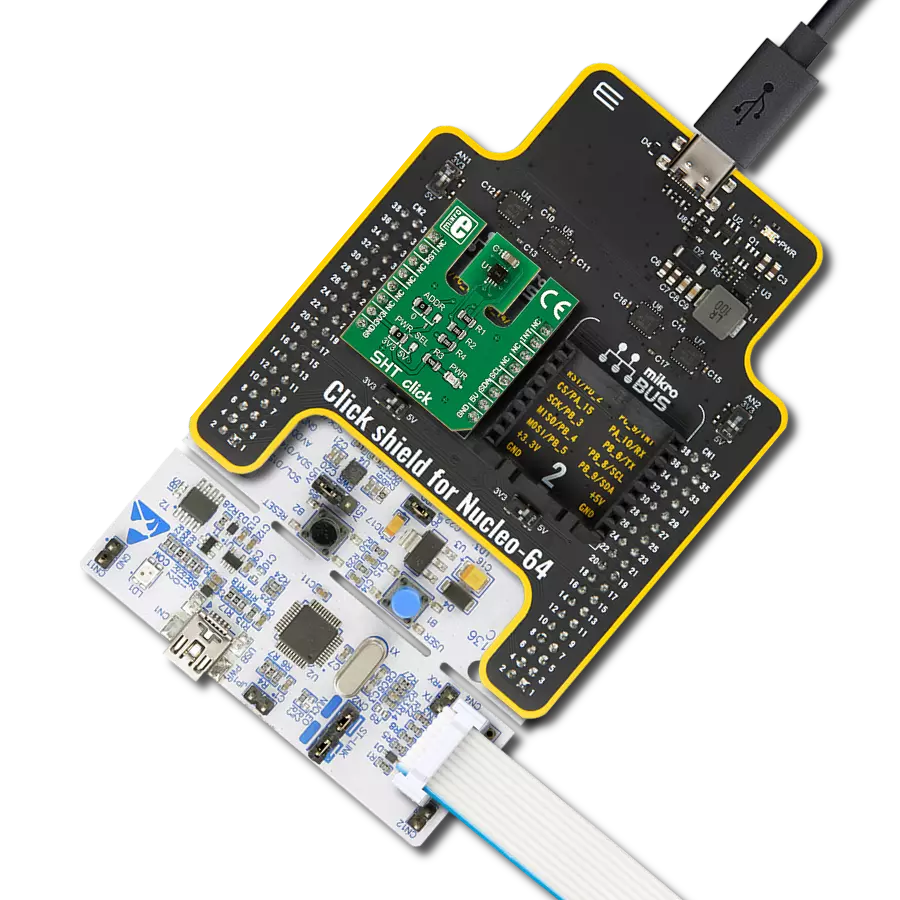检测并测量您周围的温暖或凉爽程度。
A
A
硬件概览
它是如何工作的?
Thermo 25 Click基于TMP127-Q1,这是一款专为热管理和热保护应用而设计的出厂校准数字输出温度传感器,来自德州仪器。该传感器具有高精度和温度范围为-55°C至+150°C,提供典型的±0.8°C精度。它还包含一个14位ADC,可监视和将温度读数数字化为每LSB 0.03125°C的分辨率。宽电源电压范围,低电源电流和SPI兼容接口使其成为各种应用的理想选择,包括过程控制,环境监测,家用电器等等。TMP127-Q1具有两种操作模式:连续
转换(CC)模式和关断模式。在CC模式下,ADC执行连续的温度转换,并将每个结果存储在温度寄存器中,覆盖先前转换的结果。关断模式可降低TMP127-Q1的功耗,当不需要连续温度监视时。TMP127-Q1在连续转换模式下持续上电,而关断模式可以优化低功耗应用的电流消耗。该Click board™通过标准SPI接口(与SPI或MICROWIRE总线规范兼容)与MCU通信,支持最常见的两种SPI模式,SPI模式0和3,最大频率为10MHz。SPI接口采用
简化的无寄存器映射协议,带有读写4线配置。写入TMP127-Q1将允许系统使用关断模式并读取设备ID。该Click board™可以通过VCC SEL跳线选择3.3V或5V逻辑电压电平。这样,既支持3.3V又支持5V的MCU可以正确使用通信线路。然而,该Click board™配备了一个包含易于使用的函数和示例代码的库,可供进一步开发时参考。
功能概述
开发板
Arduino UNO 是围绕 ATmega328P 芯片构建的多功能微控制器板。它为各种项目提供了广泛的连接选项,具有 14 个数字输入/输出引脚,其中六个支持 PWM 输出,以及六个模拟输入。其核心组件包括一个 16MHz 的陶瓷谐振器、一个 USB 连接器、一个电
源插孔、一个 ICSP 头和一个复位按钮,提供了为板 子供电和编程所需的一切。UNO 可以通过 USB 连接到计算机,也可以通过 AC-to-DC 适配器或电池供电。作为第一个 USB Arduino 板,它成为 Arduino 平台的基准,"Uno" 符号化其作为系列首款产品的地
位。这个名称选择,意为意大利语中的 "一",是为了 纪念 Arduino Software(IDE)1.0 的推出。最初与 Arduino Software(IDE)版本1.0 同时推出,Uno 自此成为后续 Arduino 发布的基础模型,体现了该平台的演进。
微控制器概述
MCU卡片 / MCU

建筑
AVR
MCU 内存 (KB)
32
硅供应商
Microchip
引脚数
28
RAM (字节)
2048
你完善了我!
配件
Click Shield for Arduino UNO 具有两个专有的 mikroBUS™ 插座,使所有 Click board™ 设备能够轻松与 Arduino UNO 板进行接口连接。Arduino UNO 是一款基于 ATmega328P 的微控制器开发板,为用户提供了一种经济实惠且灵活的方式来测试新概念并构建基于 ATmega328P 微控制器的原型系统,结合了性能、功耗和功能的多种配置选择。Arduino UNO 具有 14 个数字输入/输出引脚(其中 6 个可用作 PWM 输出)、6 个模拟输入、16 MHz 陶瓷谐振器(CSTCE16M0V53-R0)、USB 接口、电源插座、ICSP 头和复位按钮。大多数 ATmega328P 微控制器的引脚都连接到开发板左右两侧的 IO 引脚,然后再连接到两个 mikroBUS™ 插座。这款 Click Shield 还配备了多个开关,可执行各种功能,例如选择 mikroBUS™ 插座上模拟信号的逻辑电平,以及选择 mikroBUS™ 插座本身的逻辑电压电平。此外,用户还可以通过现有的双向电平转换电压转换器使用任何 Click board™,无论 Click board™ 运行在 3.3V 还是 5V 逻辑电压电平。一旦将 Arduino UNO 板与 Click Shield for Arduino UNO 连接,用户即可访问数百种 Click board™,并兼容 3.3V 或 5V 逻辑电压电平的设备。
使用的MCU引脚
mikroBUS™映射器
“仔细看看!”
Click board™ 原理图

一步一步来
项目组装
实时跟踪您的结果
应用程序输出
1. 应用程序输出 - 在调试模式下,“应用程序输出”窗口支持实时数据监控,直接提供执行结果的可视化。请按照提供的教程正确配置环境,以确保数据正确显示。

2. UART 终端 - 使用UART Terminal通过USB to UART converter监视数据传输,实现Click board™与开发系统之间的直接通信。请根据项目需求配置波特率和其他串行设置,以确保正常运行。有关分步设置说明,请参考提供的教程。

3. Plot 输出 - Plot功能提供了一种强大的方式来可视化实时传感器数据,使趋势分析、调试和多个数据点的对比变得更加直观。要正确设置,请按照提供的教程,其中包含使用Plot功能显示Click board™读数的分步示例。在代码中使用Plot功能时,请使用以下函数:plot(insert_graph_name, variable_name);。这是一个通用格式,用户需要将“insert_graph_name”替换为实际图表名称,并将“variable_name”替换为要显示的参数。

软件支持
库描述
该库包含 Thermo 25 Click 驱动程序的 API。
关键功能:
thermo25_check_communication- 函数将操作模式设置为关闭,然后读取并验证设备ID,然后切换回连续模式。thermo25_read_temperature- 函数以摄氏度读取温度测量值。thermo25_set_mode- 函数通过使用SPI串行接口将设备操作模式设置为关闭或连续模式。
开源
代码示例
完整的应用程序代码和一个现成的项目可以通过NECTO Studio包管理器直接安装到NECTO Studio。 应用程序代码也可以在MIKROE的GitHub账户中找到。
/*!
* @file main.c
* @brief Thermo 25 Click example
*
* # Description
* This example demonstrates the use of Thermo 25 Click board by reading and displaying
* the temperature measurements.
*
* The demo application is composed of two sections :
*
* ## Application Init
* Initializes the driver and logger, and checks the communication by setting the operating mode
* to shutdown, reading and verifying the device ID, and switching back to the continuous mode.
*
* ## Application Task
* Reads the temperature measurement in degrees Celsius and displays the results on the USB UART
* approximately once per second.
*
* @author Stefan Filipovic
*
*/
#include "board.h"
#include "log.h"
#include "thermo25.h"
static thermo25_t thermo25;
static log_t logger;
void application_init ( void )
{
log_cfg_t log_cfg; /**< Logger config object. */
thermo25_cfg_t thermo25_cfg; /**< Click config object. */
/**
* Logger initialization.
* Default baud rate: 115200
* Default log level: LOG_LEVEL_DEBUG
* @note If USB_UART_RX and USB_UART_TX
* are defined as HAL_PIN_NC, you will
* need to define them manually for log to work.
* See @b LOG_MAP_USB_UART macro definition for detailed explanation.
*/
LOG_MAP_USB_UART( log_cfg );
log_init( &logger, &log_cfg );
log_info( &logger, " Application Init " );
// Click initialization.
thermo25_cfg_setup( &thermo25_cfg );
THERMO25_MAP_MIKROBUS( thermo25_cfg, MIKROBUS_1 );
if ( SPI_MASTER_ERROR == thermo25_init( &thermo25, &thermo25_cfg ) )
{
log_error( &logger, " Communication init." );
for ( ; ; );
}
if ( THERMO25_ERROR == thermo25_check_communication ( &thermo25 ) )
{
log_error( &logger, " Check communication." );
for ( ; ; );
}
log_info( &logger, " Application Task " );
}
void application_task ( void )
{
float temperature;
if ( THERMO25_OK == thermo25_read_temperature ( &thermo25, &temperature ) )
{
log_printf ( &logger, " Temperature: %.2f degC\r\n\n", temperature );
Delay_ms ( 1000 );
}
}
int main ( void )
{
/* Do not remove this line or clock might not be set correctly. */
#ifdef PREINIT_SUPPORTED
preinit();
#endif
application_init( );
for ( ; ; )
{
application_task( );
}
return 0;
}
// ------------------------------------------------------------------------ END
额外支持
资源
类别:温度与湿度

